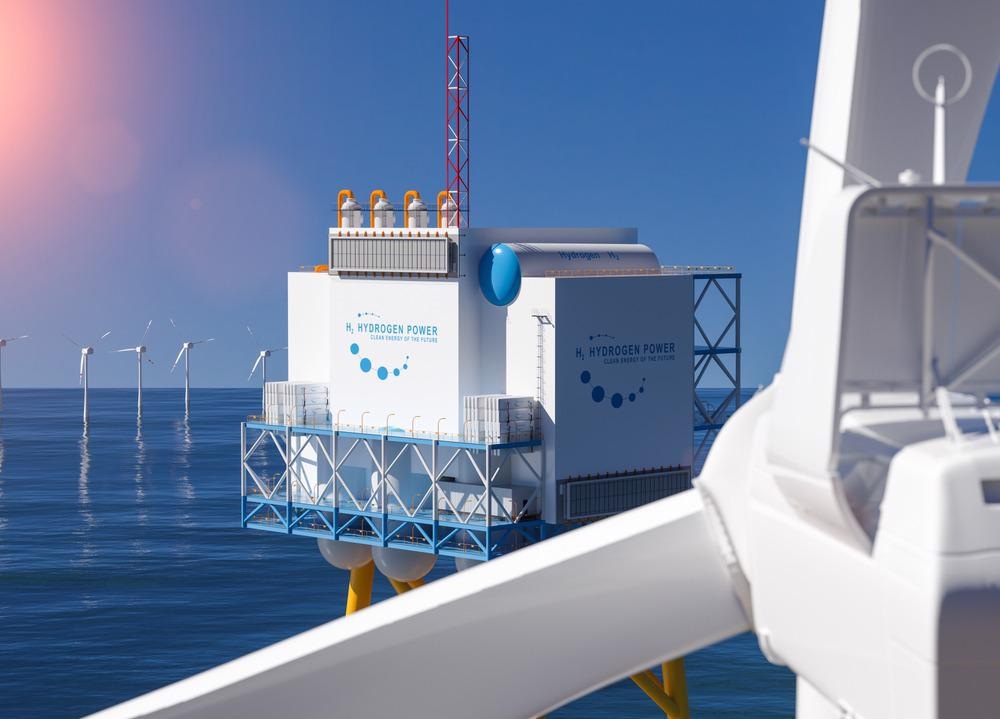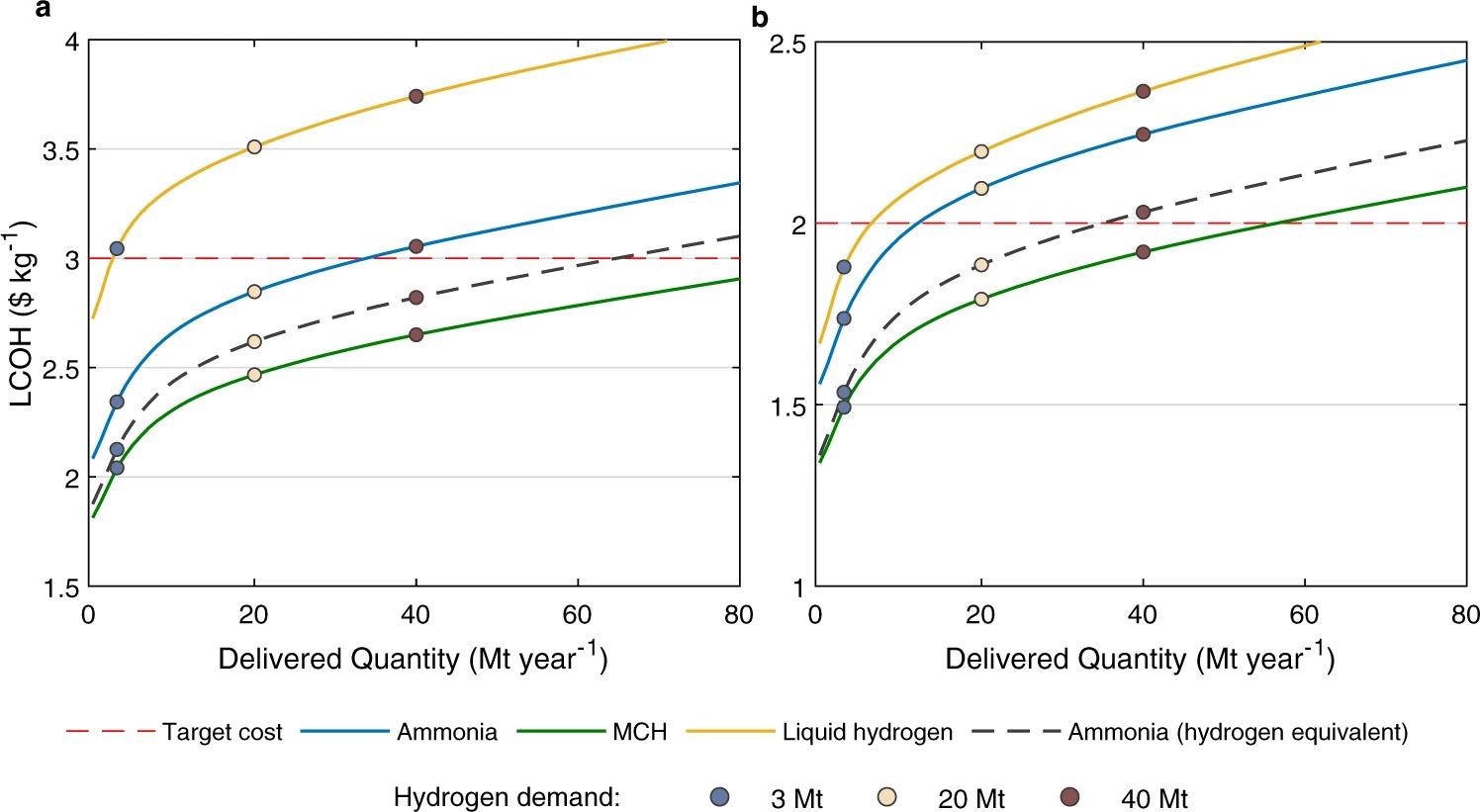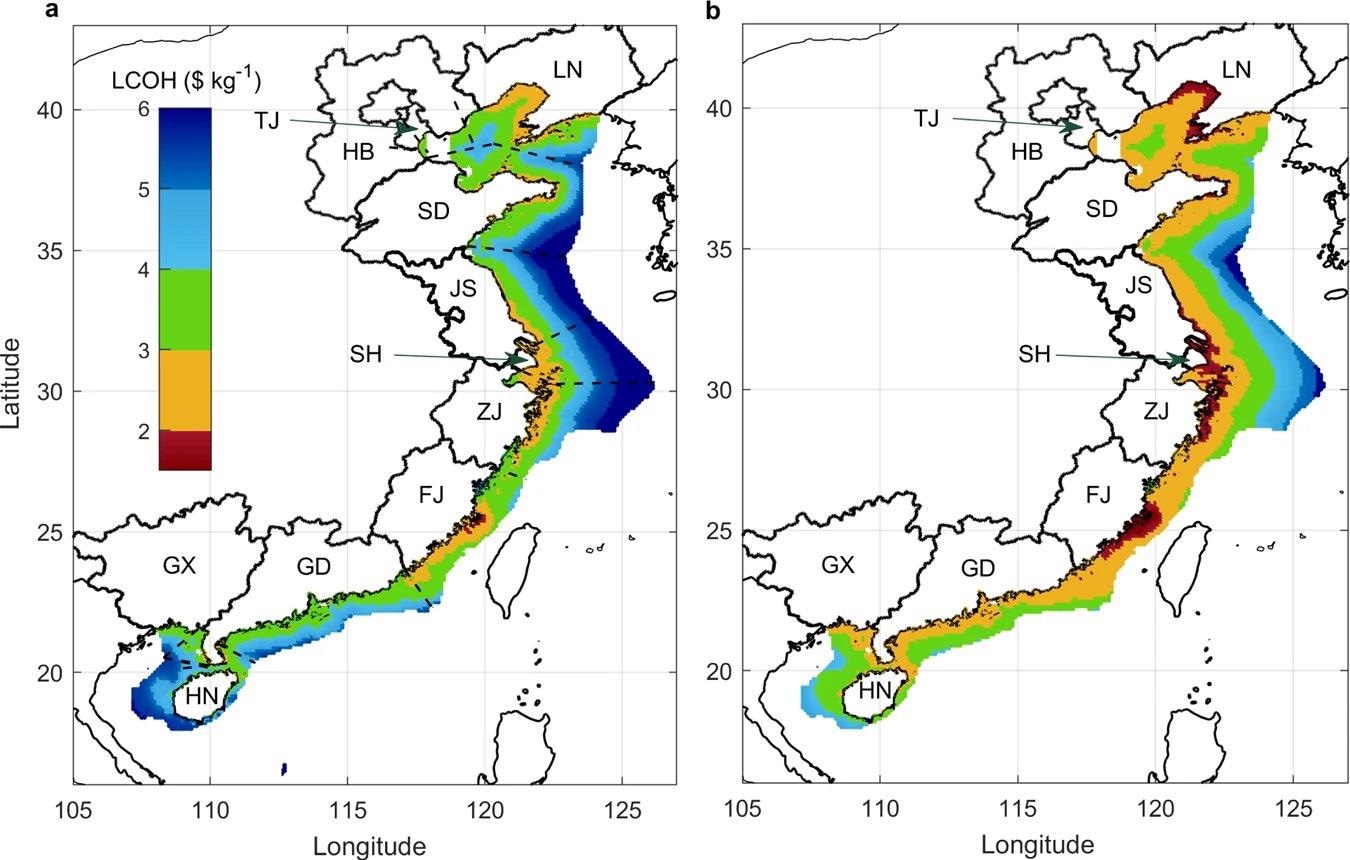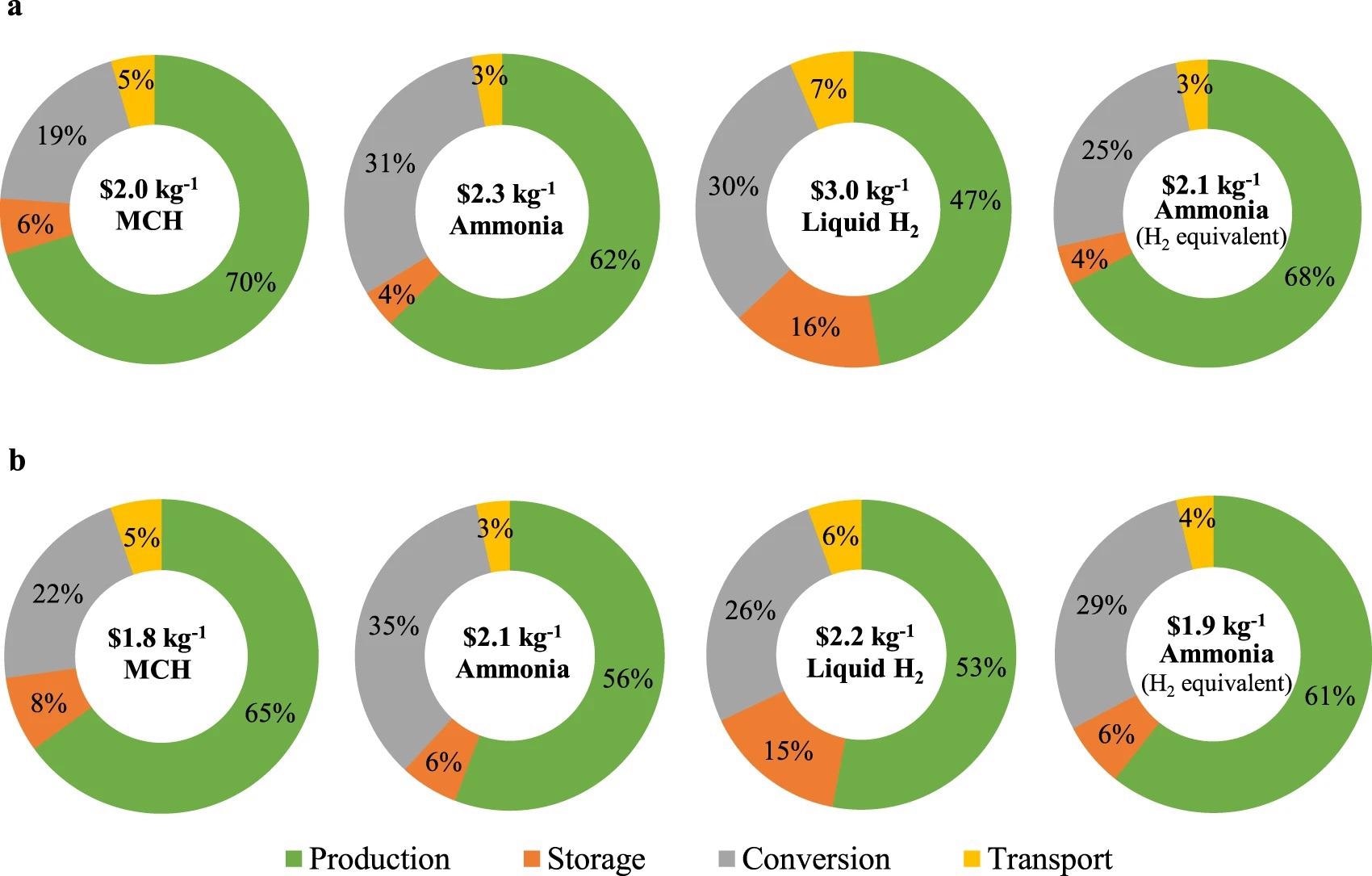In line with international climate change mitigation targets, Japan has committed to net-zero carbon emissions by 2050. To achieve this, the nation has envisaged that hydrogen will play an increasingly significant role in its future energy mix.

Study: Production of hydrogen from offshore wind in China and cost-competitive supply to Japan. Image Credit: Audio und werbung/Shutterstock.com
To consider the potential for hydrogen produced by electrolysis from power generated by Chinese offshore wind farms becoming a major component of this energy mix, a paper has been published in Nature Communications.
Japan’s Reliance on Fossil Fuels
Japan is a major industrialized economy and relies on fossil fuels to produce power for its citizens and businesses. Currently, 87% of Japan’s power needs come from burning fossil fuels such as coal and gas, and the nation is responsible for 1.1 gigatons of carbon dioxide being emitted annually.
Most of Japan’s fossil fuel needs are supplied through importing them from other nations. The nation imported over 220 million short tons of coal in 2018, making it the third-largest coal importing economy in the world.

a and b are for 2030 and 2050, respectively. Results from the baseline scenario are presented. The levelized cost of hydrogen (LCOH) is calculated as the weighted average cost for the cumulative quantity of hydrogen. Data for the three transport mechanisms are represented by solid curves with different colors. Data for delivery of ammonia without dehydrogenation at the destination are shown in gray dashed curves. Projections of hydrogen demand in Japan are tagged by colored circles. The targeted hydrogen costs for Japan are indicated with red dashed lines. MCH represents the hydrogen transport mechanism as in methylcyclohexane. Image Credit: Song, S et al., Nature
However, in line with commitments made at Paris and Cop26, Japan has stated its aim to reach carbon neutrality by 2050. As part of the nation’s fossil fuel reduction plans, hydrogen is expected to play a key role. However, as Japan imports most of its energy needs, imported hydrogen is expected to be central to meet the country’s demands.
Japan’s Targets for Hydrogen Use
Japan currently uses 1.3 megatons of hydrogen, which is mostly consumed by the industry. However, other sectors of society will require hydrogen supplies, such as transportation and domestic electricity generation.
To meet this rising demand and plug the gap in the energy supply caused by the international phasing out of fossil fuels (which Japan relies heavily on imports of) the country has set an ambitious target of 20 megatons per year by 2050.
This figure represents around 20% of the nation’s final energy consumption in 2050, according to Japanese estimates. The Japanese government has set an interim target of 3 megatons per year of hydrogen use by 2030, also in line with meeting international climate mitigation targets.

a and b are for 2030 and 2050, respectively. Results from the baseline scenario assuming the methylcyclohexane (MCH) transport mechanism are presented. The dashed black lines denote offshore wind areas which are in closest proximity to particular provincial-level administrative divisions. LN, TJ, HB, SD, JS, SH, ZJ, FJ, GD, GX, and HN are the abbreviations for Liaoning, Tianjin, Hebei, Shandong, Jiangsu, Shanghai, Zhejiang, Fujian, Guangdong, Guangxi, and Hainan, respectively. Image Credit: Song, S et al., Nature
The main source of hydrogen required by the nation will need to be renewable and “green.” Currently, 1% of the total world hydrogen manufacture is from green and blue sources. Green hydrogen comes from renewable, clean sources such as wind power, and blue hydrogen is the term given to hydrogen production where CO2 is captured and sequestered. Most hydrogen globally is produced from natural gas (this is termed gray hydrogen.)
To facilitate the economic viability of clean hydrogen, Japan has set a target of reducing the cost of hydrogen to $3 per kg by 2030 and $2 per kg by 2050. Eventually, the country aims to make clean hydrogen cost-competitive with natural gas. Projected figures for domestic production of hydrogen in Japan are $6 per kg by 2030, double that of what the nation is aiming for on cost-effectiveness. For this reason, the Japanese government envisages that imported hydrogen will be key to meeting demands.
There are several ways that hydrogen can be shipped to Japan. These include as a liquid, bound to chemical carriers, or as ammonium. In the case of ammonium, it can be used as feedstock or as a zero-carbon energy source.
The foreign suppliers that could supply Japan include Saudi Arabia and Australia, but import costs could be in the range of $3-4 per kg for green hydrogen and $3-7 per kg by 2030 for blue hydrogen, which surpasses the economic targets set forth by the Japanese government.
Importing Green and Blue Hydrogen from China
Currently, most hydrogen produced in China is termed “black” hydrogen as it is mainly produced from coal. However, there is a current shift in China’s power generation capabilities toward renewables, with wind power gaining prominence in the nation’s energy mix. China sees renewable energy as more than just a way to reduce its carbon emissions but also as a means to ensure energy security.
Considering the aforementioned import costs, the alternative of importing clean hydrogen from Chinese sources such as offshore wind farms is an attractive one. This route could help Japan meet its rising hydrogen demands whilst keeping the cost in line with projected economic targets.

a and b are for 2030 (3 Mt of hydrogen) and 2050 (20 Mt of hydrogen), respectively. The costs are mean values calculated according to offshore wind conditions over the 30-year period. Results from the baseline scenario are presented. Conversion indicates expenses were appropriate for hydrogen compression, liquefaction, ammonia synthesis, and for hydrogenation and dehydrogenation of the chemical carriers. Transport defines costs for capital and energy included in shipping and pumping. Individual items are indicated by colors as defined in the legend. Expenses for electricity are included in each item based on its corresponding consumption. MCH represents the hydrogen transport mechanism as in methylcyclohexane. Image Credit: Song, S et al., Nature
The study published in Energies has presented a techno-economic analysis of future supply chains from China to Japan from offshore wind farms in Chinese coastal provinces on an hourly basis. The study has estimated the quantity of hydrogen that could be imported into Japan by 2030 and 2050, and additionally considers factors such as investment in wind power, transport mechanisms, and electrolysis technologies. Economic considerations are taken into account.
Based on the results of the techno-economic analysis, the authors conclude that importing green hydrogen from Chinese offshore wind farms will meet Japanese technological, climate, and cost demands.
Further Reading
Song, S et al. (2021) Production of hydrogen from offshore wind in China and cost-competitive supply to Japan [online] Nature Communications 12 | nature.com. Available at: https://www.nature.com/articles/s41467-021-27214-7
Disclaimer: The views expressed here are those of the author expressed in their private capacity and do not necessarily represent the views of AZoM.com Limited T/A AZoNetwork the owner and operator of this website. This disclaimer forms part of the Terms and conditions of use of this website.